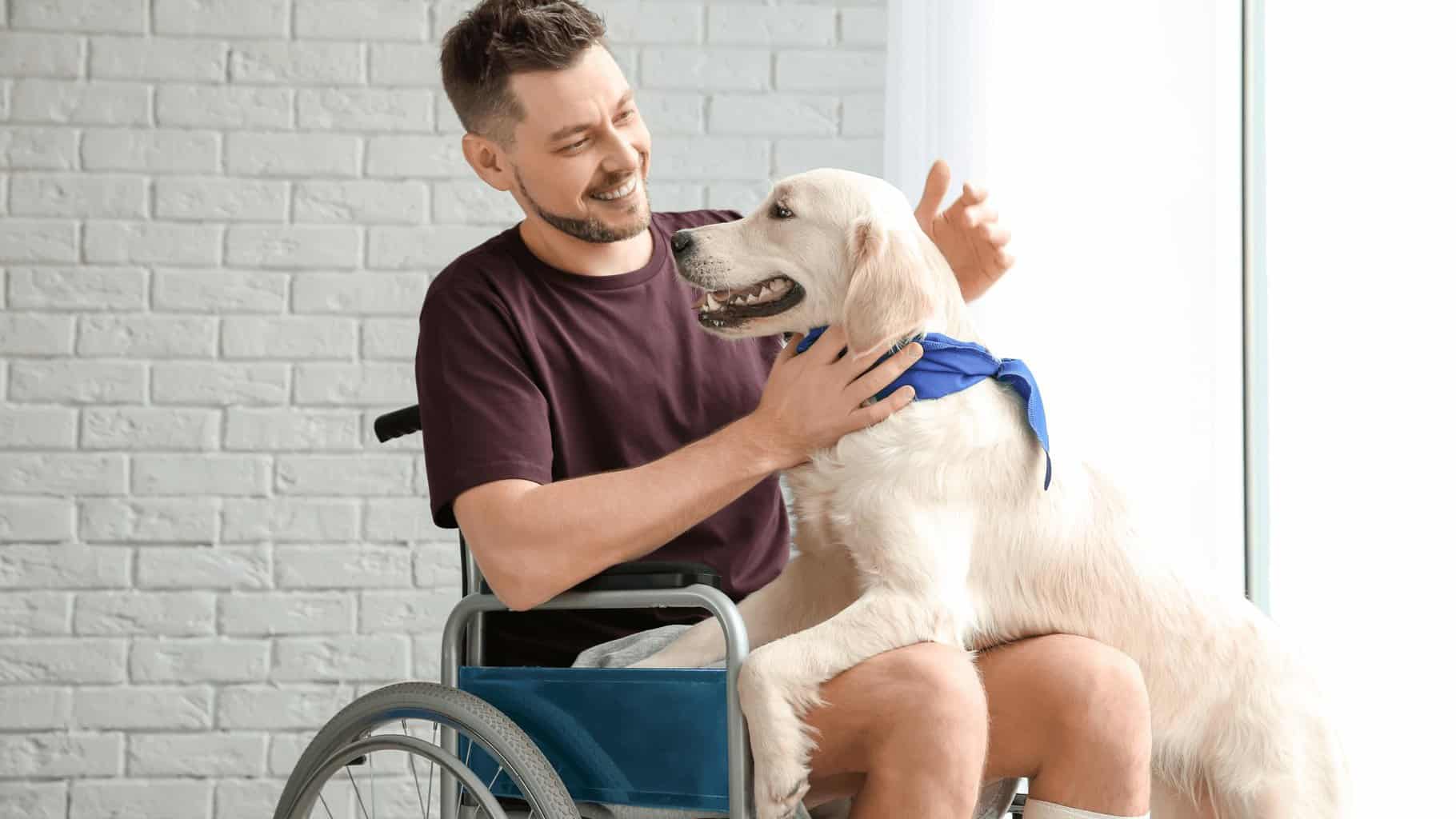Assistance Dog Training Near Me: Finding the Right Program for Your Needs
Assistance dogs play a crucial role in the lives of individuals with disabilities, providing both practical support and emotional companionship. If you’re searching for “assistance dog training near me,” it’s essential to find a program that meets your specific needs. This guide will help you understand the training process, how to choose the best program, and what to expect from your journey with an assistance dog.
 What Is Assistance Dog Training?
What Is Assistance Dog Training?
Assistance dog training equips dogs with the skills necessary to perform tasks that aid individuals with disabilities. These tasks may include:
- Guiding individuals with visual impairments.
- Alerting to sounds for those with hearing disabilities.
- Fetching items, opening doors, or providing mobility support.
- Recognizing and responding to medical conditions like seizures or low blood sugar.
- Offering emotional support and grounding for psychiatric conditions.
Trained assistance dogs enhance independence, safety, and quality of life for their handlers.
What are Assistance Dogs?
Assistance dogs are specially trained dogs that provide support and assistance to individuals with disabilities, illnesses, or conditions that affect their daily lives. These remarkable dogs are trained to perform specific tasks that aid their handlers, significantly enhancing their independence, mobility, and overall well-being. Assistance dogs can be categorized into several types, each serving a unique purpose and offering invaluable support to their handlers.
Types of Assistance Dogs
1. Service Dogs
Service dogs are trained to assist individuals with disabilities, such as mobility impairments, visual or hearing impairments, seizure disorders, or mental health conditions. These dedicated dogs perform tasks tailored to meet the individual needs of their handlers. For example, they can open doors, pick up items, provide balance support, or alert their handlers to important sounds. Service dogs are protected under the Americans with Disabilities Act (ADA), granting them public access rights. This means they can accompany their handlers in all public spaces, ensuring continuous support and assistance.
2. Therapy Dogs
Therapy dogs, also known as therapy dog teams, consist of a trained dog and its handler. These compassionate dogs are trained to provide emotional support, comfort, and affection to individuals in various settings, such as hospitals, nursing homes, schools, and disaster zones. Unlike service dogs, therapy dogs are not protected under the ADA and do not have public access rights. However, they play a vital role in promoting mental health, social skills, and overall well-being. Therapy dogs bring joy and comfort to those in need, making a significant impact on their emotional and psychological health.
 Key Features of a Quality Assistance Dog Training Program
Key Features of a Quality Assistance Dog Training Program
When searching for “assistance dog training near me,” consider the following aspects to ensure you find a reputable program:
1. Experienced Trainers
Look for programs with certified trainers who have experience in assistance dog training. They should specialize in teaching specific skills tailored to the needs of individuals with disabilities.
Some programs also offer guidance for clients who wish to train their own service dog, emphasizing the commitment and expertise required.
2. Comprehensive Training Curriculum
A good program will include:
- Basic Obedience: Foundational commands like sit, stay, and come.
- Advanced Skills: Tasks related to the handler’s specific disability.
- Training exercises specific to therapy dog programs, preparing both the canine and the human to meet the requirements of these programs.
- Public Access Training: Preparing the dog for behavior in various public settings.
3. Customization for Individual Needs
Every disability is unique, and the training should reflect that. Programs should tailor their approach to meet the handler’s specific requirements.
4. Support and Follow-Up
Reputable programs provide ongoing support and periodic evaluations to maintain the dog’s skills and ensure the handler’s satisfaction.
Steps to Find Assistance Dog Training Near You
1. Research Local Programs
Start by searching online or asking for recommendations from disability organizations, veterinarians, or community groups. Websites like Assistance Dogs International (ADI) can help you locate accredited programs.
Additionally, visiting the training facility is crucial to observe the environment and ensure it meets high standards.
2. Evaluate Program Credentials
Ensure the program is reputable and follows ethical training practices. Look for certifications, testimonials, and success stories.
3. Visit the Facility
Schedule a visit to observe the training process and meet the staff. This will give you a sense of their professionalism and approach.
4. Ask Questions
Inquire about:
- The duration and cost of the training.
- The breeds they work with.
- Their matching process for pairing dogs with handlers.
5. Review Contracts and Policies
Before committing, carefully review the program’s policies, including guarantees, post-training support, and requirements for handlers.
Benefits of Local Assistance Dog Training
Choosing a nearby program offers several advantages:
- Easier access to training sessions.
- Opportunities to build a strong relationship with trainers.
- Faster response for follow-up support and refresher courses.
- Specialized support for children with disabilities, helping them improve social skills, speech, and overall well-being.
 How Genesis Assistance Dogs, Inc. Can Help
How Genesis Assistance Dogs, Inc. Can Help
At Genesis Assistance Dogs, Inc., we are committed to transforming lives by providing highly trained assistance dogs. Our team offers personalized training programs designed to meet the unique needs of each handler. These programs focus on fostering strong relationships between dogs and humans, ensuring effective support and emotional connections. Located in Florida, we proudly serve local communities and beyond, ensuring that individuals receive the best support possible.
FAQs About Assistance Dog Training Near Me
Q: How long does it take to train an assistance dog? A: Training typically takes 18-24 months, depending on the complexity of the tasks and the dog’s progress.
Q: Can I train my own dog to be an assistance dog? A: Yes, self-training is an option, but it requires significant time, expertise, and commitment. Professional programs often provide better results. The bond between the dog and the human handler is crucial for effective training and support.
Q: Are there breed restrictions for assistance dogs? A: While certain breeds like Labrador Retrievers and Golden Retrievers are commonly used, the dog’s temperament and ability to perform tasks are more important than breed.
Q: What is the cost of assistance dog training? A: Costs vary widely, ranging from a few thousand dollars for self-training support to $20,000-$30,000 for fully trained dogs. Many nonprofits offer financial aid or fundraising assistance.
Q: How do I know if a program is right for me? A: Visit the program, ask questions, and ensure they understand your specific needs. Look for transparency and a strong support system.
Begin Your Journey with an Assistance Dog
Finding the right assistance dog training program near you is the first step toward gaining a life-changing companion. With the right training and support, your assistance dog will empower you to live with greater independence and confidence. To learn more about our programs or to get started, visit Genesis Assistance Dogs, Inc..

 Key Features of a Quality Assistance Dog Training Program
Key Features of a Quality Assistance Dog Training Program
